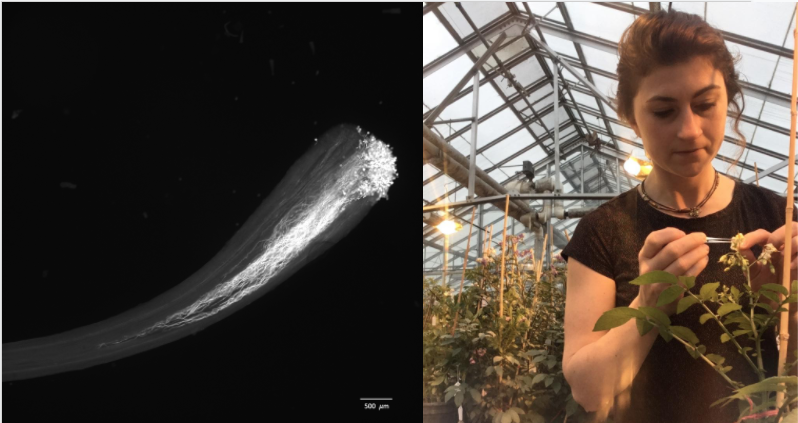Research Objective 1

As we develop potato inbreds, it will be essential to have not only reliable sources of self-compatibility (SC), but also a high-throughput method to carry out early generation selection for self-compatibility. We are identifying genetic loci for self-compatibility in the 2x S. chacoense inbred line M6 that has been a reliable parent for the production of SC offspring. We are phenotyping an S. chacoense F2 population segregating for SC in replicated trials in two greenhouse locations (Michigan State University and University of Wisconsin Madison). We have found that phenotyping self-compatibility is surprisingly complex. While plants that readily produce berries following self-fertilization are easily scored as SC, those that do not produce berries could potentially be male or female infertile. We are characterizing pollen germination, stylar pollen tube growth, fruit set and set seed to permit genetic mapping of these traits integral to self-fertility.